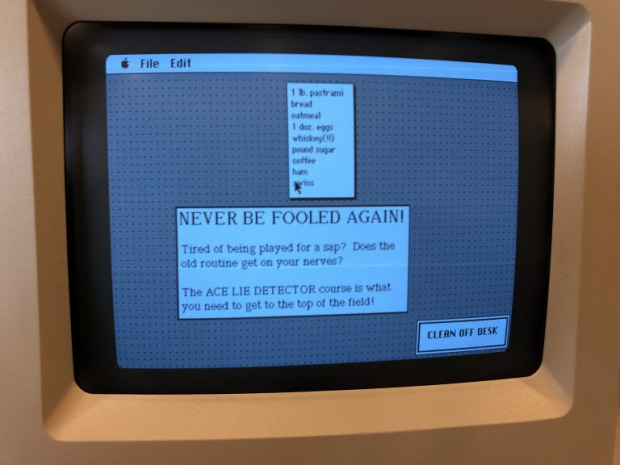A Sucker in Spades & Transitional Media
The question I get asked a lot is: Why do I care so much about early interactive media, particularly since they are generally relegated to the black and white (or green on green) environment of a computer monitor (and a small one, at that), are text-heavy, and whose images–-if they exist at all––are comprised of ASCII art, and mood, augmented by 8-bit sound (if there is any sound at all)? This is a valid question in light of contemporary interactive storytelling techniques that involve robustly immersive environments created with Virtual Reality, Augmented Reality, and 3D technologies.
It boils down to this: I am fascinated with the way ideas develop over time and contribute to approaches, techniques, and technologies used today. A case in point is Robert DiChiara’s detective-adventure game, A Sucker in Spades, which serves as an example of transitional media during the formation of electronic literature.
No one is beyond scrutiny in A Sucker in Spades. The police, criminals, secretaries, femme fatales––even staid librarians––are fair game for a story that requires only 395K of space.
Works referenced:
|
Title |
Author | Year |
|---|---|---|
| A Sucker in Spades | Robert DiChiara | 1988 |
Platforms referenced:
| Title | Developers | Year initiated |
|---|---|---|
| Hypergate | Mark Bernstein | 1988 |
Publishers referenced:
| Title | Location |
|---|---|
| Eastgate Systems, Inc. |
Eastgate Systems, Inc.
134 Main Street
02472
Watertown
, MA
United States
See map: Google Maps
Massachusetts US
|



